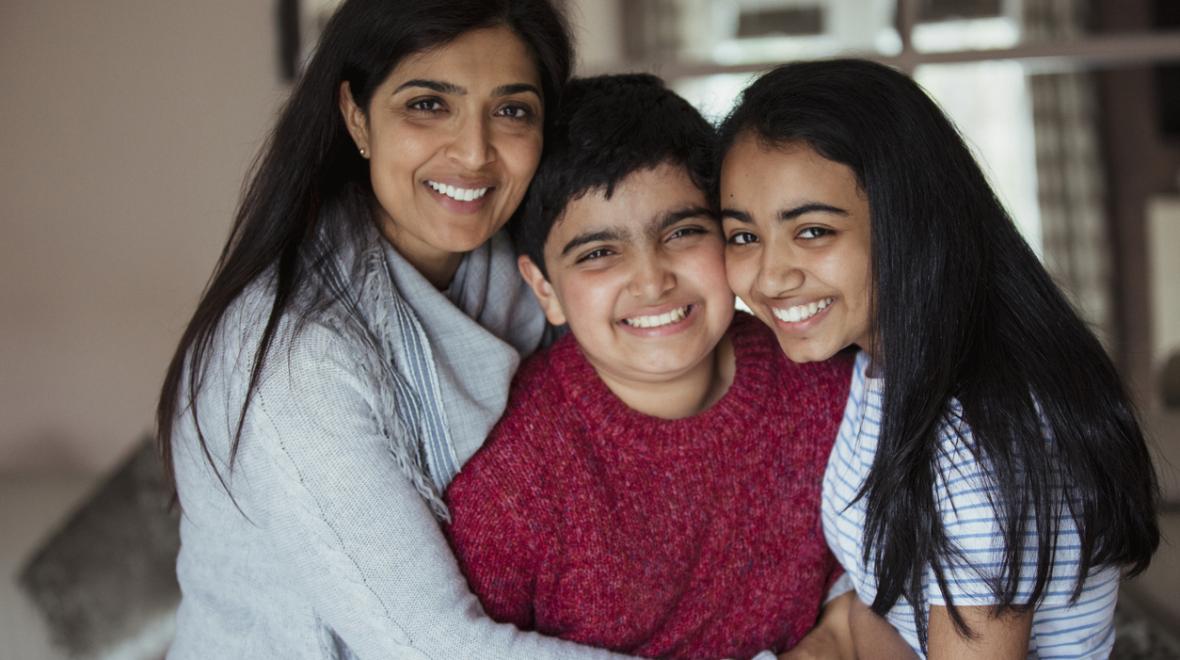
Editor’s note: This article was sponsored by Boyer Children's Clinic.
When pediatrician Jennie McLaurin, M.D., hears someone say, “Oh, they’re on the spectrum,” she can’t help but cringe.
“What do you even mean by that?” asks McLaurin, who practices developmental and behavioral pediatrics at Boyer Children’s Clinic, where she also serves as medical director.
The assumption that everyone with a certain diagnosis behaves the same way is simply not true, McLaurin says. Even more to the point, this kind of stereotyping can limit one’s ability to fully engage with individuals and see their distinct strengths and challenges. Understanding that people’s brains work differently — whether they have a diagnosis or not — is important, she adds.
“If we don’t recognize the diversity in the world — in the way all of us take in and process information — we require people to function in only one manner and thrive in only one setting,” she notes.
What is neurodiversity?
“Neurodiverse” is a descriptive term that refers to the different ways people experience and interact with the world. It is commonly used in the context of neurological or developmental conditions, such as autism spectrum disorder (ASD), ADHD or other learning differences.
While a diagnosis may accompany someone with neurodiversity, it doesn’t have to, McLaurin says. For example, someone might experience sensory differences in the way they view and navigate their environment yet not have a diagnosed condition.
Even people with the same diagnosis can experience the world very differently. One of the first things McLaurin will say to families after diagnosing a child with autism is, “We don’t stereotype.”
“There is so much incredible diversity within that diagnosis,” she says. “You can look wildly different from someone else.”
When parents ask McLaurin whether their child with autism can experience loving relationships, her answer is a resounding “Yes!”
“The stereotype that people with autism don’t feel or recognize emotions isn’t true,” she says. “Some kids are extremely intuitive. Some cuddle. There is diversity.”
Looking beyond a label
Stripping away the stereotyping allows observers to recognize a child’s gifts, challenges and needs.
There might be a 3-year-old who speaks in full sentences and already knows his left from right, yet struggles to connect with peers. That child has different needs than an individual who might make great eye contact but has limited vocabulary and requires their toys to be rigidly placed. Yet another child might share none of those challenges but instead experience sensory difficulties, exaggerated fears and social anxiety.
There’s also diversity in how people may respond and engage in certain environments, says McLaurin. Someone might be challenged in one setting but not in another. A person’s age, hormone levels and intellectual understanding can all influence their ability to flourish or struggle. Family construction, social supports and schools play significant roles, too.
This whole-person approach reflects what developmental therapists are trained to do. McLaurin explains, “We are looking to discover: Who is this particular child? What is their collection of strengths and challenges?”
Therapy and services can help tailor strategies to the specific ways in which someone’s brain works. These tools can help individuals overcome potential challenges in socially regulated environments, such as school and eventually the workplace, she says.
McLaurin recalls working with a very bright teenage boy with autism. He struggled with offering people too much information in conversations, often talking nonstop. Together, they worked on how he could convey his thoughts more succinctly, consolidating in five minutes what had previously taken him 15.
Why diagnose at all?
While there is value in embracing neurodiversity, diagnoses are needed if one is struggling to navigate the world in a way that’s safe, says McLaurin.
It’s also important to consider whether someone’s traits and tendencies are keeping them from their goals, such as going on a date, applying for a job or maintaining a relationship. Various therapies and interventions can help them develop the skills necessary to thrive.
Diagnosis should bring support, not create limitations. That’s why McLaurin cautions people to decide carefully when sharing information about a diagnosis with others. Even though a diagnosis is meant to be helpful, there can still be a stigma attached to it. Unfortunately, society is still more compassionate around physical differences, she says.
“You see someone with a broken leg or a prosthesis, and everyone helps,” says McLaurin. “But people don’t naturally turn in a helpful way to someone who has a hard time with noise.”
Approach people with curiosity
On a personal level, stereotyping individuals with a particular diagnosis can limit how we engage with them, McLaurin notes. Some people might inaccurately assume that someone with an autism diagnosis can’t understand jokes or be a good friend. They might stereotype a bright kid with autism as a nerd who is only good at interacting with computers.
“They might be a ballerina or the next Van Gogh,” she says. “They might be the kindest person you’ve ever met.”
Instead of relying on stereotypes, approach people with curiosity and humility, McLaurin advises. If you’re a parent, you might ask the child’s caregiver: “What does your child most enjoy in play? Is there anything your child reacts strongly to that I should understand?”
If a child is exhibiting an undesirable behavior, such as pushing, consider offering something they can do instead. Parents can also coach their children to ask permission of others before engaging play or physical contact.
More broadly, it’s important to convey the message that people experience the world differently — and that’s not a deficit. Instead, a parent could comment, “That’s how some people learn and play.” Another tip: Look for someone’s strengths, pointing to what a classmate can do instead of highlighting an area where they struggle.
Practicing these strategies and approaches is useful for everyone, McLaurin notes.
“It’s important for people to let their child be who they are, realizing the gifts and challenges in every child — whether they are neurodivergent or neurotypical.”
|
Sponsored by: |

As the largest provider of Early Support for Infants & Toddlers (ESIT) programs and services in Seattle, Boyer is recognized as one of the region’s premier resources for children with neuromuscular disorders and developmental delays. Over the past 80 years, Boyer’s highly skilled experts have provided thousands of families with support, guidance and hope for a brighter future. Jennie McLaurin, M.D., has training in developmental/behavioral pediatrics and also works at the national level as a senior fellow in Public Health and Innovation at the National Association of Community Health Centers. She has also obtained her Center of Excellence designation (autism diagnosis) by the state of Washington. |











